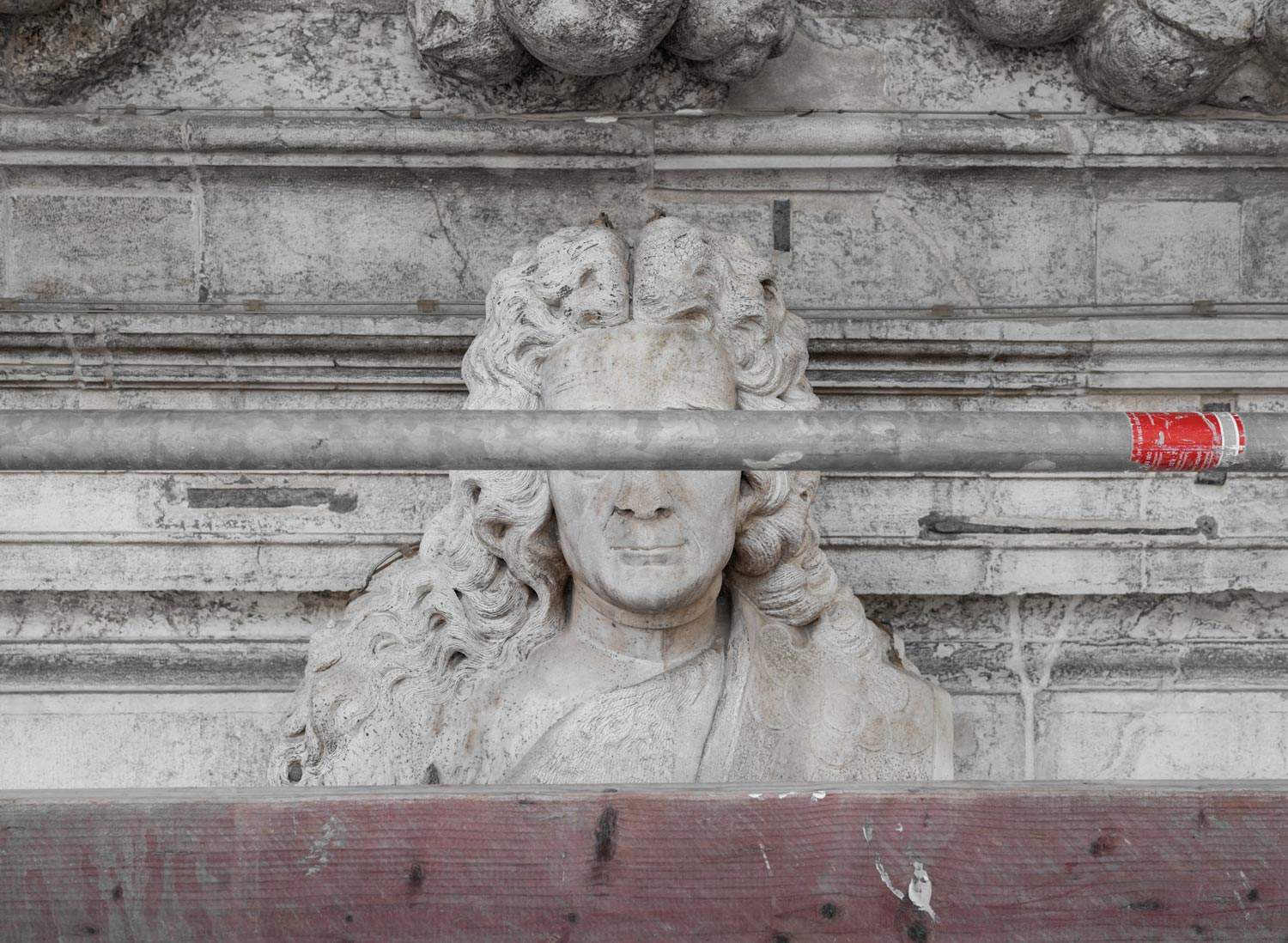The Museum of Palazzo Grimani, a rare example of Tuscan-Roman Renaissance architecture in Venice and a place within which the classical and the contemporary find a unique point of union, hosts the exhibition Venice Mapping Time, a project by photographer Ugo Carmeni. Curated by Daniela Ferretti with Dario Dalla Lana, promoted by the Veneto Regional Museums Directorate and the Soprintendenza Archeologia, Belle Arti e Paesaggio for the Municipality of Venice and the Lagoon and sponsored by the Patriarchate of Venice, the exhibition was conceived expressly for the museum’s spaces and will be open to the public from July 5 to November 26, 2023, offering a fresh look at the “stones of Venice” and highlighting their particular way of interacting with light. The exhibition is part of a project that aims to increasingly connect the museum’s great historical legacy with experiences in the contemporary: the exhibitions produced and co-produced by Palazzo Grimani, in fact, aim to enhance the permanent installations and architecture of this place through innovative proposals and cultural operations created specifically for its spaces.
"The Venice Mapping Time exhibition stems from the Museum’s desire to enhance, on the one hand, the link with the city and, on the other, the link with the protection and enhancement of Venice’s historical and artistic heritage," explains Valeria Finocchi, director of the Palazzo Grimani Museum. “This exhibition project emphasizes the way in which a documentation work becomes a real art project, continuing the museum’s path in recent years and connecting the ancient and the contemporary beyond photography.”
On the second floor of the building, usually dedicated to temporary exhibitions, Carmeni is exhibiting fifty-seven photographs that start from a documentation and mapping work of the city’s architectural surfaces that took place between October 2020 and March 2023 in the context of a series of restorations of some buildings and churches of the Patriarchate of Venice, to which are added looks at other places in the city. The exhibition will also include a multimedia installation, consisting of a larger selection of images mounted in a seemingly random sequence but actually generated by an algorithm that, reacting to the presence of the viewer, will produce an ever-changing visual reading throughout the opening time of the exhibition while a similar mechanism, in connection with the audience turnout, will determine the composition of the sound design. The projection - conceived expressly by the artist for this exhibition in collaboration with Federico Poni for the algorithm and Alessandro Gambato for the sound design - will thus be a flow of images and sounds that follow one another in a random narrative, a personal journey on the intimate perception of the idea of Venice between past, present and future, without interruption. While on the piano nobile, in the rooms housing the decorations of Giovanni da Udine, Francesco Salviati, Federico Zuccari as well as the statuary collection of Giovanni Grimani (returned to the palace after more than four centuries), a particularly important exhibition accent will welcome visitors. In the Psyche Room, in which a bas-relief depicting a salamander was recently unearthed, Ugo Carmeni composes a rhapsodic Venetian bestiary, consisting of a careful selection of ten photographs of sculptural details with animal subjects such as lions, dragons, snakes and eagles scattered throughout the city.
The sixty-seven works on display are enlargements of details printed on cotton paper in large format (up to 100 x 150 cm); each photograph is hand-polished with several coats of wax to protect the pigments and enhance their vividness and finally applied to aluminum panels mounted on a wooden frame.
“With a Ruskinian spirit, Carmeni climbed the scaffolding of the many restoration sites of the facades of Venetian churches and palaces and observed, noted, analyzed, mapped, photographed and finally selected, among the many shots, those necessary for his own very personal narrative,” explains Daniela Ferretti, curator of the exhibition. “Ugo’s is a dreamlike pilgrimage made of pitfalls and wonders, marvels and nightmares, corrosions and polished surfaces, vertiginous and hyperbolic architectural glimpses, disturbing and fascinating allegorical personifications, admirable lapidaries and fantastic bestiaries. With illuminating details Ugo Carmeni squares before us an unexpected and unsuspected polyphony of semantic symbols that invites the most attentive observation and guides us to the discovery of an ’intermediate world’.”
“For years I have been observing the architecture and surfaces of Venice with my camera,” says Ugo Carmeni. “It is a work that involves a great deal of patience, being potentially infinite. My aim is to explore and record the chromatic variety of the plasters, the texture of the walls and the textures of the roofs focusing on the effects of time passing on the stones of this city.”
Precisely to emphasize the close correlation between his photographic work and time, the title of each work indicates only the instant in which the photo was taken, not its spatial coordinates.
The exhibition is accompanied by a catalog produced by the artist, an integral part of the art and exhibition project.
Venice Mapping Time adds to the vast plan to revitalize and enhance the Museum of Palazzo Grimani that began in 2019 with the return of the collection of ancient statues of Giovanni Grimani, Patriarch of Aquileia, after more than four hundred years in the Tribuna and Doge’s Room. This was joined by contemporary art exhibitions dedicated to Helen Frankenthaler (2019), Georg Baselitz (2021) and Mary Weatherford (2022). The Museum is also hosting, as a long-term loan, the twelve canvases of the Archinto cycle made especially for the Portego Hall by Georg Baselitz.
 |
| Venice, the Museum of Palazzo Grimani with an exhibition on the details of the city's palaces |
Warning: the translation into English of the original Italian article was created using automatic tools. We undertake to review all articles, but we do not guarantee the total absence of inaccuracies in the translation due to the program. You can find the original by clicking on the ITA button. If you find any mistake,please contact us.